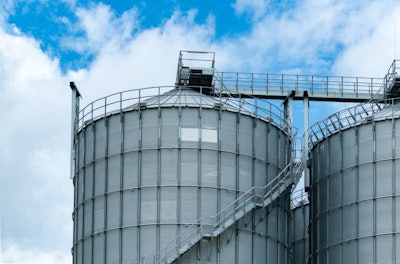
A poultry feed mill in Alabama would cause ‘measurable increase in economic activity’
A study by the Alabama Cooperative Extension System shows that a new poultry feed mill in Alabama would cause a “measurable increase in economic activity.”
According to the U.S. Department of Agriculture, Alabama was the third largest poultry-producing state in the U.S. in 2019, with 1.13 billion head and 7.42 billion pounds in live weight slaughtered.
To find the effects of a new feed mill in the state, the study used the following assumptions:
- Average annual production was 520,000 tons
- An average sales price of US$260 per ton
- Cost to construct the feed mill was US$30.2 million
- All dollars are in 2020 U.S. dollars
“When a feed mill enters a local economy, it causes a series of new economic activities (impacts) to take place,” the study’s overview said. “For this summary, economic impacts are broken into construction (one-time impact) and operations (annual impact). Construction and operations will generate tax revenue through federal taxes as well as state and local taxes.”
The economic activity created during construction and the feed mill’s first year of operation, according to the study, would include:
- 499 jobs from ongoing operations and 398 jobs during construction
- US$42.3 million in value added each year from ongoing operations and US$25.7 during construction
- US$25.2 million in labor income from ongoing operations and US$18.7 million during construction
- US$207 million in annual sales from ongoing operations and US$51.5 million during construction
- US$5.4 million in taxes paid each year ongoing operations and US$8.5 million during construction
“The construction of a new feed mill requires purchases such as steel, concrete, and milling equipment, including grinders, mixers, pellet mills, and material handling systems,” the overview said. “Once construction is completed, the feed mill consistently purchases feed ingredients and packaging materials, utilizes other professional services, and purchases many other inputs to produce feed for sale. The direct purchase of supplies and equipment are known as direct effects. The suppliers and vendors used by the feed mill then must purchase inputs to supply the feed mill; these are known as indirect effects. Those who work in the construction of the feed mill and for the suppliers and vendors then use their additional income to make household purchases; these are known as household or induced effects. Taken together, the sum of direct, indirect, and induced effects are known as total effects and accounts for the total multiplier effect present from the construction and annual operations of a new feed mill.”















